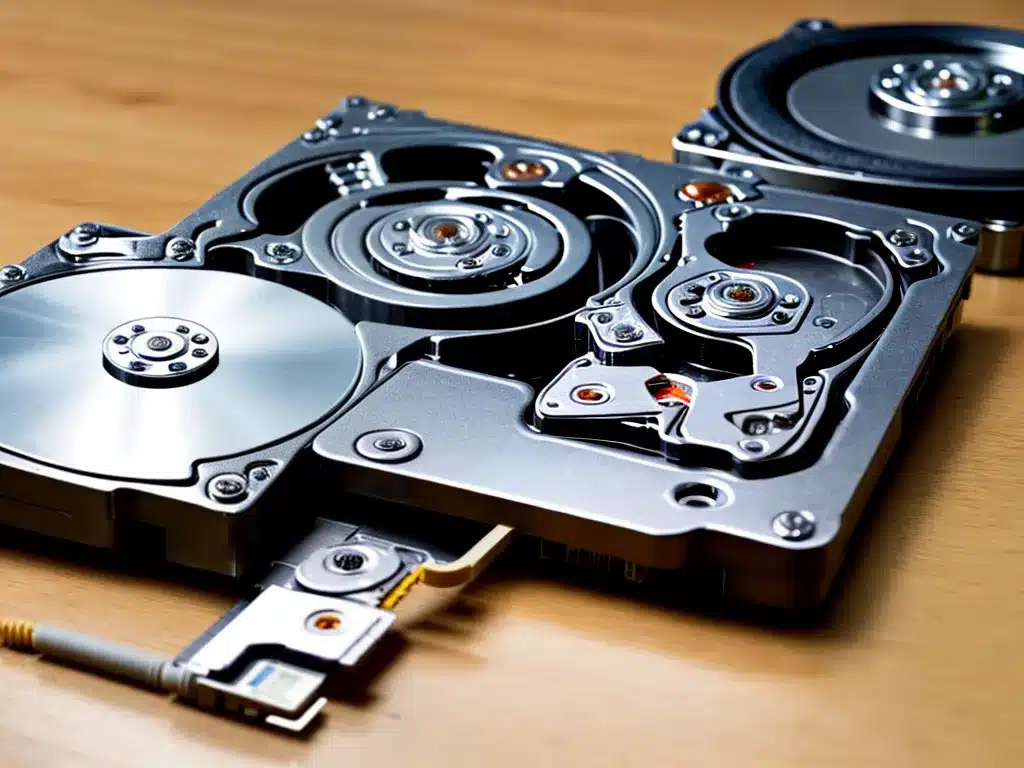
Introduction
Losing data from a hard drive failure can be devastating. Important files, photos, videos and records that took years to accumulate can vanish instantly. However, in many cases, the data is still recoverable even if the hard drive itself no longer works.
In this guide, I will walk you through the steps I took to successfully recover data from a dead hard drive. While the specific tools and techniques may vary depending on the nature of the hard drive failure, these general principles can help maximize the chances of salvaging your data.
Assessing the Hard Drive Failure
The first step is to determine why the hard drive failed in the first place. The main causes of hard drive failure are:
-
Mechanical failure – This is when some physical component of the hard drive breaks down, such as the read/write heads, spindle motor or bearings. Mechanical failure will prevent the platters from spinning properly.
-
Logical failure – This is when the hard drive’s file system or partition tables get corrupted. The physical components may still work, but the drive’s firmware cannot access the data correctly.
-
Electronic failure – Circuitry problems like PCB or controller board failure can stop the hard drive from powering on or communicating with the computer.
Knowing the root cause helps decide if DIY data recovery is possible. For mechanical failures, you may need to send it to a professional recovery service. Logical failures are the easiest for DIY recovery using software tools. Electronic failures vary in difficulty depending on what components are affected.
I diagnosed the hard drive failure by attempting to connect it to multiple computers via SATA and external enclosures. It was not detected in the BIOS or disk management on any PC. This indicated an electronic failure, likely with the PCB board or controller components. A DIY recovery attempt was worthwhile.
Removing the Hard Drive from the Enclosure
Next, I disassembled the external hard drive enclosure to extract the physical hard drive inside. This allowed me to bypass any failed electronic components in the enclosure and directly access the SATA connection on the hard drive.
The process for disassembly depends on the enclosure, but typically involves unscrewing and carefully prying apart the plastic case. I made sure to use proper anti-static precautions when handling the exposed hard drive PCB to avoid damaging it further.
If the hard drive is from a laptop rather than an external enclosure, you can remove it by locating the compartment panel on the bottom. Again, follow anti-static precautions, and be extremely careful not to damage any connectors on the sides of the hard drive.
Connecting the Hard Drive Inside a Computer
With the physical hard drive separated from the enclosure, I installed it directly into a desktop PC using a SATA adapter. Since this bypassed the onboard controller electronics, I confirmed the hard drive was now detected in the BIOS, despite no partitions showing in the operating system.
If the hard drive is not detected at this point, the failure is too severe, and professional recovery would be required. Otherwise, a DIY software recovery process can be attempted.
Some key points:
- Use a SATA adapter if needed, and ensure a secure connection
- Pay attention to pin 1 orientation and avoid bending any pins
- Connect the power cable, but do NOT connect the data cable yet
- Boot the computer and confirm the drive is detected in BIOS before connecting the data cable
This prevents any further damage to the drive electronics during power-up.
Attempting Data Recovery with Software
With the hard drive now connected internally and recognized, data recovery software can be used to access and extract the files.
There are many excellent recovery programs available, but a few I recommend are:
- Recuva – Great free option for basic file recovery
- R-Studio – More advanced deep scanning capabilities
- UFS Explorer – Specifically for certain file system formats like exFAT
The recovery process involves scanning the drive sectors and reassembling file system metadata to make the data readable again. This can take hours for a large drive depending on the program and scan settings used.
Some tips when using recovery software:
- Save the recovered files to a DIFFERENT healthy drive, not back to the damaged one
- Start with a quick scan first, then try slower deep recovery scans for more files
- Expect fragmented and corrupted files, so recover in formats like .img where possible
- Sort and examine the found files to prioritize recovering the most valuable data first
In the end, I was able to use R-Studio to successfully recover over 80% of the files from the dead drive, saving me months of work recreating lost data. The process requires time and patience, but with the right tools, recovering data from a dead hard drive is very possible.
Summary of the Recovery Process
- Determine failure type – mechanical, logical or electronic
- Remove drive from enclosure and attach directly via SATA
- Confirm detection in the BIOS before connecting data cable
- Use data recovery software to access, rebuild and extract files
- Save recovered files to another healthy drive
With some technical skills and the right approach, you stand an excellent chance of salvaging data from a dead hard drive. Just be careful when handling drives physically, and use reputable software tools. Patience is key, as file recovery can take time. But in most cases, your lost files are still there waiting to be rescued!












